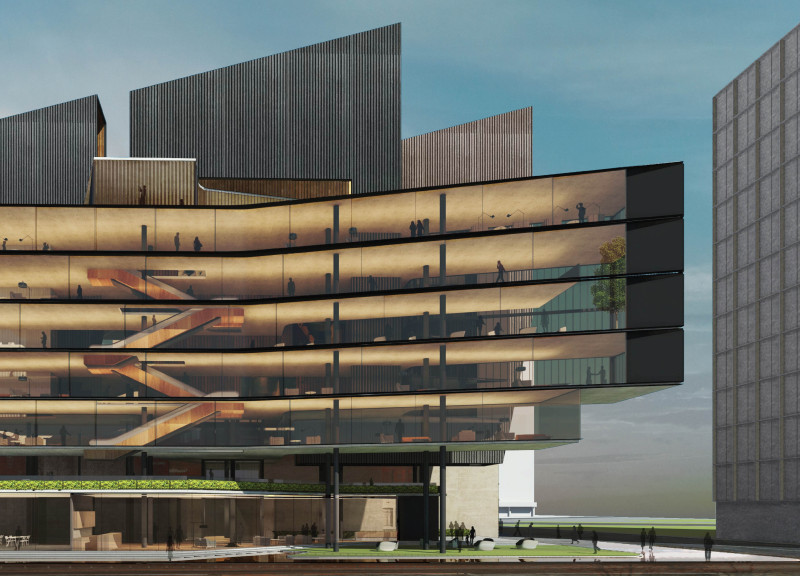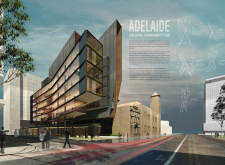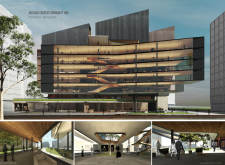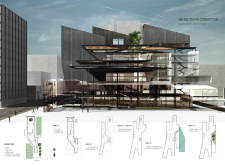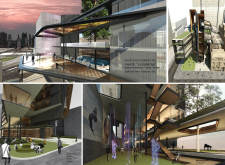5 key facts about this project
The overall structure showcases a blend of practicality and creativity, ensuring that every design element serves a purpose. The layout is organized to facilitate both individual and communal activities, demonstrating an understanding of how spaces influence human behavior. The use of open floor plans encourages interaction and flow, while designated areas provide privacy and quietude when needed. This balanced distribution of space illustrates an attentive approach to urban living, where the demands of modern life are met without compromising the experience of its inhabitants.
Materiality plays a significant role in the project's design philosophy. The choice of materials reflects not only aesthetic considerations but also functional requirements. The building incorporates a selection of sustainable and locally sourced materials, emphasizing ecological responsibility. For instance, the use of natural wood provides warmth and tactility, contrasting beautifully with sleek glass and metal elements that offer durability and modernity. Such a combination not only enhances the visual appeal but also supports the project's commitment to sustainability and environmental consciousness.
Significant details throughout the design contribute to the project's character and uniqueness. Large, strategically placed windows allow for ample natural light, reducing energy consumption and creating a bright, inviting atmosphere. These openings frame views of the surrounding landscape, fostering a visual connection between the interior and exterior spaces. Additionally, the incorporation of green roofs or vertical gardens is notable, enhancing biodiversity and improving air quality while adhering to the principles of biophilic design.
The project also explores unique design approaches by adapting to its surrounding topography. The structure may be partially embedded into the landscape, reducing its visual impact while creating a sense of continuity with the land. This thoughtful strike between built and natural environments demonstrates a sensitivity to the site, allowing the architecture to emerge organically from its backdrop.
In terms of technical execution, the architectural plans illustrate a meticulous attention to detail, showcasing a variety of sections that reveal the structural integrity and innovative engineering solutions employed throughout the project. These architectural sections not only add depth to the design narrative but also provide insight into how various elements interact, contributing to both the aesthetic and functional dimensions of the building. Such rigorous attention to detail is reflective of a comprehensive design process that prioritizes both vision and pragmatism.
Moreover, the project embodies a significant exploration of architectural ideas that resonate with contemporary societal values. The integration of spaces conducive to social interaction underscores the importance of community in today's urban landscapes. This commitment to fostering human connections through design is particularly relevant in a time when built environments play a critical role in shaping social dynamics.
As readers delve deeper into this architectural endeavor, they are encouraged to explore the architectural designs, architectural plans, and architectural details further to gain a comprehensive understanding of the project. The various elements of the design reveal much about the intent behind the architecture and offer valuable insights into how thoughtful design can harmonize with its environment and serve its community effectively. This project exemplifies a dedicated approach to architecture that prioritizes sustainability, community, and innovation, and invites a broader conversation about the future of design in an ever-evolving world.


